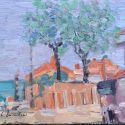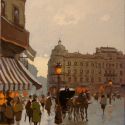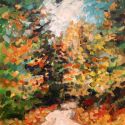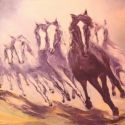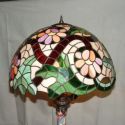The Museum of the Romanian Peasant in Bucharest is a very popular and collection-rich cultural institution in the capital of the country, with a history which covers almost one hundred years of successes and turmoils, and a treasure of objects and artefacts, unique in the world. Fortunatelly for a museum of this size and importance, whose exhibits present and define the real identity of the Romanian people, over the last decade or so great efforts have been made in reorganising and advertising the museum. So therefore it now has more and more visitors every year, drawn not only to the richness and variety of the exhibits, but also to the number of events that are hosted here.
Although it's story actually begins almost a century ago, the museum bears the name of Museum of the Romanian Peasant only since February 5th 1990. But first the idea of a Peasant's Museum emerged in 1875, when the critic and politician Titu Maiorescu, one of the most important Romanian intelectuals of the 19th century, decided to open at the National Museum of Atiquities a section of "folk objects : clothes, carpets, fabrics". Many of the first exhibits are nowadays in the museum's collections, some of them being unique pieces of tremendous value. On October 1 1906, due to the efforts of Spiru Haret, the first museum of folk art was opened : the Museum of Ethnography, national, industrial and decorative arts, hosted in the former Mint House.
The turning point in the history of the institution of the appointement of the brilliant art historian, Alexandru Tzigara-Samurcas, as the new director of the museum. He changed the name of the institution to the Museum of Ethnography and National Art, and in 1912 he settled on the Museum of National Art. He would run the museum for the next four decades and managed to turn it into one of the most important cultural objectives of Romania, further enriching and organising it's collections, hosting several important events and shows. Due to his efforts, the Museum of National Art became more and more popular, and seldom enjoyed the support of key politician and cultural figures of those times.
This museum , then hosted in it's present building, had several important events, but one of the best was the exhibition of folk art, opened in 1931, considered by all the visitors and intelectuals as one of the greatest in Europe. Over the years, until the Second World War, many of the best exhibits in the museum's collections travelled abroad, being presented in shows organised in Rome, Barcelona, Paris, to name but a few. It was the best way of presenting the national identity of the country, and this kind of exhibitions made Romania much more popular.
After the war, the change of political regime brought a difficult period for the museum. The first and most important hardship of the eviction of the museum's collections from the former building, in 1953, all of them being moved in the Stirbei Palace, on Victoria Way. For the next 25 years the museum will be a tennant here, with the new name of the Museum of Folk Art of the Popular Republic (later Socialist). It was definetelly the worst time in the history of the museum, and it was only due to the efforts of it's specialists - led by the new director, Tancred Banateanu, that the activities continued. Yet, the museum edited and organised less shows, yet continued to enrich the collections, aquiring more and more items, despite the fact that few of them ever saw the "light".
Another change in the status and title of the institution took place in 1978, when the museum was once again moved and given a new name : Museum of the Village and Folk Art. Some of the best items of the collections were taken away, dispersed through various places, storage rooms and even boxes, kept away from the public, often in difficult and inapropriate conditions. It would only be in 1990, after the fall of Communism, that the museum returned for good in it's original home, with the contemporary name, and once again regained it's place as one of the most important cultural landmarks. It is ironic that for 37, the original building of the museum hosted the Museum of Communist Party History, a strange and idiotic adventure in the land of mixing distorted history and political decrees.
In the 1990 Mineriad, in June, this beautiful museum was ravaged by the furious hordes, as it was mistaken for the headquarters of the National Peasant's Party. In 2002, after a logn wait, the exhibit space was finally greatly extended. One of the best and most popular exhibits, actually created by Tzigara-Samurcas, is the so-called "house in the nouse", placed inside the museum in a non-naturalistic approach, for it to be better seen by the visitors.
Photo : iasg2007.ro
2007-11-23



